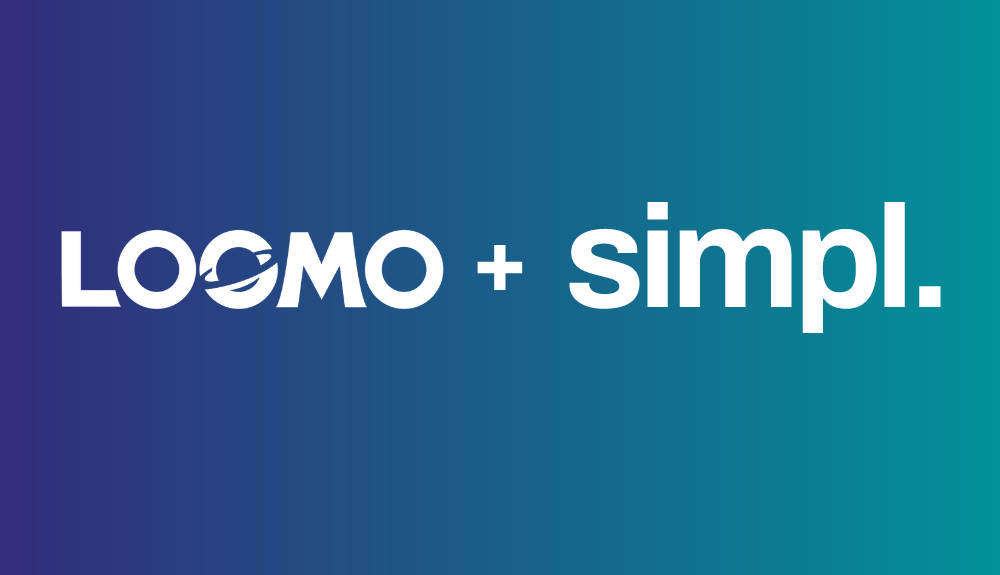We’re doing it! After trialing an alternating four-day work week for the past year, Loomo is excited to be shifting to a permanent four-day work week starting immediately. Want to learn more about why we’ve taken this step, what it means for you, and why you should also consider taking the leap? Take a look below. Or, connect with us to learn more about it. We’re happy to share what we’ve learned, what works, and how to make the most out of our new four-day schedule.
Quick Links
Intro – Motorcycles, burnout, and folding laundry
Reverse engineering awesome
Making the shift to four days, are we crazy?
How we did it. How it’s going
What’s next?
Are you a client? What does this mean for you?
Motorcycles, burnout, and folding laundry
In late 2021, I had had enough. I wanted to quit. I’d hit a wall where I simply couldn’t escape the feeling that my company – which Luke and I had worked so hard to build over the past decade – with all of our amazing staff, fun clients, and challenging projects had simply sucked the life out of me and I didn’t know if I could do it anymore. Was it the pandemic? External pressures? The realization that I had far surpassed the age of 40 without fulfilling my dream of touring on a motorcycle across the USA like Peter Fonda in Easy Rider? Maybe. But I was on the lookout for a solution.
Now, the thing to know about me is that I’m a perpetual tester. Some call it “shiny thing syndrome” but I like to call it the pursuit of ongoing improvement. In life, at work, and for our clients, we’re constantly trying new tactics and testing new ways to make our processes, tools, and results better. It’s what makes us good at our work, and why (I believe) we managed to come out of the pandemic stronger than when we went in. So, rather than throw my hands in the air, resign myself to a mid-life crisis, and head down to the local convertible dealership, I decided that I should try researching who else had felt the same way and had solved their problem. Where did I start looking? In a pile of mismatched socks.
One of our good friends and clients, Duncan Wardle, has made a career of finding new ways to solve age-old problems. As the former Head of Innovation and Creativity for the Walt Disney Company, it was his job to lead teams in developing new ways of thinking. More specifically, ways to get out of our typical modes of thinking so that fresh ideas can flow. While I won’t do a deep dive right now, one of the most effective problem-solving/ideation tools I’ve found is to get my brain out of ‘busy beta’ and into ‘thoughtful theta’ or ‘amazing alpha’. I’ll let Duncan explain.
In a recent article for HRM, Duncan outlines how the human brain floats between four different states, ‘busy beta’, ‘thoughtful theta’, ‘dreamy delta’, and ‘amazing alpha’.
“The first is ‘busy beta’, which he says accounts for 13 per cent of our brain capacity, yet it’s the state we stay in for most of the day.
“It’s where the reticular activating system between your conscious and subconscious brain – which I call a door because it’s easier to remember – is closed,” he says.
“Our subconscious makes up 87 per cent of our brain capacity. And so every innovation you’ve ever seen, every creative problem you’ve ever solved, it’s all back here. But when that door is shut, you don’t have access to it.”
Next is ‘dreamy delta’. These are the great ideas you have when your brain is totally relaxed, often at night or as you’re waking from sleep.
“It’s 2:30am and you can solve world peace, but you can’t remember the idea in the morning,” says Wardle.
That’s why he says it’s a good idea to keep a notepad by your bed, as Dreamy Delta can often lead to the next brain state, ‘thoughtful theta’. These are your big-idea moments. Wardle says this was a brain state that big innovators, such as Thomas Edison, would often stay in.
The ultimate brain state for creative and innovative thinking is ‘Amazing Alpha’, says Wardle. This is where you unlock the subconscious part of people’s brains and they have those Aa-ha! moments.”
Now, how do you do this? Not to oversimplify things, but the key is to find a way to shut off your ‘busy beta’ brain and let the others take centre stage. Have you ever had an amazing idea, or solved a tricky problem from work when you’re in the shower? AKA, doing something mindless? If so, it’s because you’ve just shut down your conscious brain and handed the reins to the other 87% of your brain.
For me, my shut-down point is around 15 minutes into folding the laundry (which has the added benefit of making my wife smile). In late 2021, 15 minutes into folding a large pile of socks that I often affectionately call my “laundry monster”, an idea came to me: what if, rather than focusing my energy on what made my days bad, I could reverse engineer my best days to be my every day.
Reverse engineering awesome
Ok, so I had my marching orders: reverse engineer my best days to be my every day. The first step in my journey was to step back and try to determine what made my best days so awesome. Again, if you know me well enough you won’t be surprised, I made a list:
Reasons why some days are more awesome than others:
- I am well-rested and ready for my day
- I have time to think and apply myself to my clients’ work
- My day is not chaotic with sudden interruptions or fires to put out
- I have time for creativity, in any form
- I also have time outside of work to spend with friends and family (aka, not working late or on the weekends).
I immediately noticed that you could easily take the above list, reverse each statement, and see why I had felt so drained. Think about it, who loves their work when they are not well rested, have no time to think, are constantly putting out fires and can’t do what they love most about their job? Does this sound like a day you’ve experienced? Read on.
Making the shift to four days, are we crazy?
For the Loomo team, the idea of shifting to a four-day workweek caught our attention several years ago when several companies, and even some countries, started trialing the benefits of putting the life back into ‘work-life balance’. The idea seemed simple, work less, make time for things in your life other than work, feel better, then work better when you are actually at your desk. Simple, right?
The fear from the employer side, however – and from the customer/client side – was that work would suffer, customers would get angry, and the business would falter. These are very reasonable concerns, to be sure, as nobody knew what reducing the number of hours employees work would mean in the long run. Now, two years on, the results are starting to pour in and they do a pretty good job of speaking for themselves:
- 4-Day Workweek in UK Brings No Loss of Productivity, Companies in Experiment Say
- Study sees 90 pct rise in productivity, happiness after UAE Sharjah’s four-day work week
- Forget Productivity. The 4-Day Workweek Has a Greater Benefit That Solves a Major Problem. It just might be the solution you’ve been looking for
- Bonus: The climate benefits of a four-day workweek
At this point, you may be asking yourself “so how exactly does working less make things better?” The short answer is, it doesn’t. Having an extra day off doesn’t reduce the number of meetings you have, or issues you’ll need to address, or give you more time for creativity. Nope.
What it will do – and what we found during our trial – is that working fewer hours forces you to hone in on what is keeping you from realizing your “best day every day” and gives you more time for the ‘thoughtful theta’ moments that are needed to find solutions to those problems. Have you seen Warren Buffett’s calendar? It’s almost blank. Why? Because it gives him time to think. To solve really large problems.
How we did it. How it’s going
I mentioned that I like to test things, right? While the above latest results are starting to change minds globally, when we decided to take the leap there was very little data to go on or recommendations to make things work. It was just an idea that I felt held potential and might make a difference in my personal sense of fulfilment and direction. So, in an abundance of caution, we started testing working four days per week every other week to see what worked and what didn’t. The results surprised us all.
I’ll never forget the first Friday. It was incredible. I was home, my son was at school, my phone wasn’t ringing, and my out-of-office replies were doing their thing. I read articles, I drank coffee, and I watched the birds in my garden. Then, on Monday, shit hit the fan. The relaxation and inner calm I experienced on Friday were nowhere to be found as I quickly realized that my inbox was double the size, my due dates were even nearer, and several clients were annoyed that I didn’t reply for three whole days. But I wanted more of that feeling. That sense of calm. The moments when I could subconsciously think about a problem and effortlessly come up with a creative solution.
The good news? I wasn’t alone. The whole team felt the same way! But what could we do to make sure one more day of relaxation didn’t make our entire world implode? In order to make the four-day working week a reality we realized that the projects, clients, or team didn’t have to change. How we approached the work itself did. Back to the laundry pile!
Over the past year, the Loomo team has been taking our alternating Fridays and actively utilizing ‘thoughtful theta’ moments to help achieve our goal of a permanent four-day work week. This has meant revising many of our older and more time-consuming processes, systematizing much of what we do, and setting procedures to ensure the work we take on is done on time, on budget, and with improved client communication. It’s also meant bringing in new staff like our incredible Admin Assistant, Aleisha, our Content Manager, Meghan, and our extended design team members, Ara and Joseph. We’ve even expanded our project management systems, added simple website support ticketing and started using more collaborative tools for client content management, like Agorapulse.
Some of our top tips for staying on top of work include:
- Block out 3-4 hours each day for focused work (that means no meetings at all during those periods. None.)
- Set a list of priorities for each staff member, and the team overall, that need to be focused on and/or completed each week
- Set mid-week (Wednesday) touch-points with the team to identify any issues or help that is needed, then re-prioritize to help each other out wherever possible
- Keep your clients up to date with where your projects are at. This can mean weekly and/or monthly updates to review major project milestones, upcoming deliverables, etc.
- Review your priorities at the end of the week (Thursday afternoon) to see what worked, what didn’t, and how you can ensure next week goes smoothly!
So, while it wasn’t as straightforward as saying “take an extra day off” and leaving it at that, we’re happy to say that the results of our trial have been 100% positive. The team is more rested, we are more focused on the work we do, and we are more able to be creative when we need to turn it on.
What’s next? Are you feeling better, Jeremy?
Is it ok if I LOL about what I just wrote? Yes, I can honestly say that the items noted in my list above from my best days have more often become the norm rather than the exception. Not just because we have shifted to more days off, but because doing so also forced us to improve every other area of our business, and that is always a good thing.
Should you take the leap to trial a four-day workweek as well? I would be over the moon if you did. If it intrigues you, give us a shout we’d be happy to chat about how you can start – even once in a while. Just not on a Friday, ok?
PS – Interested in learning more about Duncan Wardle and creating an innovation mindset? I strongly encourage you to dive deeper on his blog, visit him at a conference, or book him to work with your company. You won’t be sorry!
Are you a client? What does this mean for you?
Client? Awesome! I’m sure you’re wondering what this means for you and for your projects. Simply put, all content, marketing, project, or meeting deadlines stay the same. After all, the whole goal is to stay as productive as before while actually improving our efficiencies.
Need to get a hold of us on the weekend? If it’s not an emergency, email is best and will be addressed first thing Monday morning. If it IS an emergency, such as your website is down, your ads have come to a grinding halt due to a configuration or platform issue, or your system has been taken over by foreign hackers then we certainly agree, it’s time to give us a call. Give your account manager a ring via our main line at 604-210-5592.
Easy peasy!




